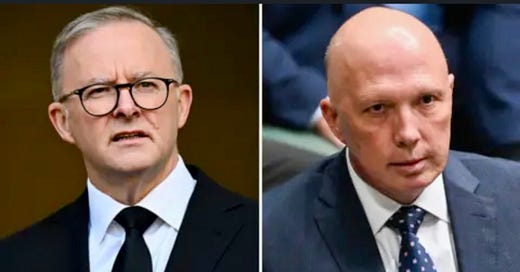Albanese announces Australian Federal Election for May 3
The Australian PM launches the Campaign of Fear which commentators believe could be the ugliest and most negative in recent years.
Australia’s political landscape over the past decade has been characterised by frequent leadership changes, with five prime ministers since 2015 reflecting a pattern of internal party turbulence and electoral unpredictability. Only two of the last three federal elections have favoured incumbents, a record shaped by Tony Abbott’s removal in 2015, Malcolm…
Keep reading with a 7-day free trial
Subscribe to Cranmer’s Substack to keep reading this post and get 7 days of free access to the full post archives.





